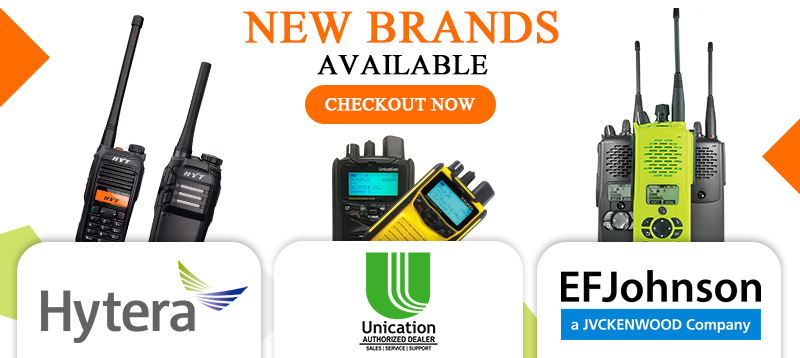K-12 School Communications Report Card
Survey Participants
A Motorola Solutions study offers a valuable snapshot of the current state of communications in school districts across the country. Conducted in May and June, responses were gathered from a wide cross-section of K-12 schools and educational professionals in 43 states. Participants were rather evenly divided among different-sized districts, resulting in a good mix of U.S. schools.
Almost 45 percent of respondents were school administrators. Other participants included information technology (IT) and telecommunications, operations and maintenance, teachers and administrative staff, transportation and facilities directors, and safety and security management.
Survey Highlights
Results indicate that keeping students and staff safe and secure is top of mind for schools – with 99% of respondents saying this was their most important priority. This not only means preparing for disasters and weather events, but being able to respond and coordinate efforts instantly throughout the school or district. The mandate to improve safety extends beyond school property to keeping students safe on school buses, field trips and more.
Respondents confirm that using a reliable communications device with long battery life is another top priority. This was closely followed by having uninterrupted communications with everyone in the school or district. The research revealed that two-way radios are the primary means of communication for nearly half of the nation’s schools (40 percent as the main form; an additional six percent use radios along with email, text messaging, etc.).
Eighty-five percent have their own private two-way radio system and 15 percent lease access time. Interestingly enough, 22 percent use landlines, 16 percent cell phones and 15 percent the Internet, despite the potential for power failures, outages, weather events and stronger safe-driving laws restricting cell phone use. Additionally, the research found that insufficient funding is the main barrier to introducing or improving communication solutions.
Elementary and high schools in 26 states are receiving less state funding in the 2012-13 school year than they did last year, and in 35 states, school funding now falls below 2008 levels. As K-12 schools confront these budget shortfalls, they must be smarter about how they spend their dollars.
Are School Communication Systems Making The Grade?
With two-thirds of respondents using a two-way radio system as their main form of communication, only a third said they were able to communicate with everyone in their district, anywhere they traveled, such as bus drivers on their routes.
Forty-three percent felt the clear communications were limited in some way – 22 percent saying there were gaps in coverage or trouble spots and 21 percent indicating communications were clearest only in buildings. Contrast this with 94 percent who emphasize “uninterrupted communication with everyone in the school or district” as a top priority, and there is room for improvement. The clarity, coverage and capacity of two-way radios must be extended beyond school buildings and district boundaries to be effective.
Unified communications is one of the greatest needs revealed in this survey – particularly when it comes to connecting and coordinating personnel. Recent statistics show that while an average shooting event spans 13 minutes, it takes the average first responder 10 minutes to arrive on scene. Any opportunity to improve or accelerate communications and increase the safety and security of students and staff is absolutely critical.
Driving Better Communication District Wide
Almost 65 percent of responding schools own or manage their own buses and nearly as many have a district-wide communication system to connect their schools to bus drivers. Eighty-one percent use two-way radios, approved by the U.S. Department of Transportation (DOT) as a safe and legal way for drivers of commercial motor vehicles to communicate on the road.
Twenty-one percent of today’s school bus drivers use cell phones and nine percent use a combination or other form of communication. Yet, when asked if they were aware of the DOT’s restriction on the use of cell phones by bus drivers, 83 percent of educators said yes.
Doing Their Homework On Emergency Preparedness
When it comes to their communication systems, the majority of school districts feel they are prepared for an emergency: 30 percent say “very prepared” and 64 percent feel “somewhat prepared.” While 22 percent indicate their current system is fine, nearly 40 percent believe that their district needs an updated communication system to better meet their school’s needs – particularly for emergencies.
In addition, 22 percent have problems with the clarity or coverage of their communications, 17 percent want more capabilities for increased efficiency, such as GPS and data applications, and 11 percent are in the process of improving or upgrading their system.
What Schools Want Most – A Clear Pass Or Fail
When asked which capabilities are most important in their school communications system, 67 percent expressed the need for text messaging when voice simply isn’t practical. This was followed by two equally significant safety concerns – the desire for integrated GPS to track and monitor buses on their routes (41 percent) and the importance of a transmit interrupt feature so that school officials could prioritize critical communications instantly (38 percent).
Roadblocks To Improving Safety And Security
No question, fewer dollars are driving communication decisions. Funding is tighter for the 2012-13 school year than the previous year in 26 states, and 35 states are providing less funding for K-12 schools than they did in 2008. And this comes on top of already-deep cuts from previous years.
Over 65 percent of respondents confirmed the budget barrier, noting that insufficient funds are preventing their school from improving communications. Thirteen percent indicated they did not know about new technologies and nine percent responded they don’t need it. (The latter is primarily due to the fact that they are implementing new communication systems now or upgrading in the near future.)








